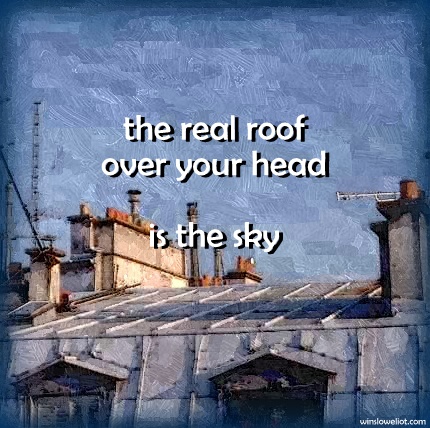
Stillness 8-10: We build a roof for ourselves for protection from the elements, but there is nothing like experiencing the vast arc of sky as our real roof—whether it’s a backdrop of midnight indigo velvet scattered deep with starry diamonds or the rich royal blue of high summer. We can expand our small bubbles that encase us as we bumble and tumble along in through our days and nights. We feel ourselves part of a far greater cosmos than our typically limited physical spheres allow.
I often wonder about the difference between physical life and metaphysical life, and I always come to the same feeling about them: they are one and the same. We live in a world of symbol, imagery, and archetype, which is why I love tarot so much. It is a delicious concentrate of our inner life, revealed in outer images, interpreted and understood in an animated, ongoing parade of thoughts, feelings, and actions.
One of the most troublesome challenges to our well-being is our language. We tend to be very hard on ourselves, very judgmental. Our words are harsh and concrete. I have do this. You should do that. They wish they’d done the other. One needs to be more helpful. I’m a failure. That relationship was a failure. We tell ourselves that being busy is good, and that leisure is naughty or at best it’s a reward for being busy. Stillness is equated with laziness. If we let ourselves be playful we’re ignoring the dreadful realities of life. And how dare we feel happy when there is so much suffering in the world?
Listen to the words you use very carefully and you’ll start to choose them with more gratitude and kindness, especially toward yourself. Try to use more images and metaphors. Metaphors free us from imagined constrictions of our daily lives and our assumptions of ourselves. A metaphor is the transfer of the meaning of one word to a different word, originating from the Greek metaphora: meta means “over, across, beyond” and pherein means “to carry or bear across.” We use metaphors not only because they help to make sense of what we’re trying to say, but because they infuse our thoughts and images with a different, and freeing, perspective.
Imagine some part of your life as a metaphor for adventure, passion, peacefulness, accomplishment, helpfulness, or wonder. How would you describe it? Would it be a mountain or a library or a ship? How would you describe yourself in that life? Would you be a lamp, or a sword and shield, or a gaily-decorated box festooned with ribbons? How would you feel and how would you act? When you look at your life as a story, rendered through symbols and archetypes rather than those scrapes and bruises on your knees and elbows, everything expands in possibility and marvel.
Some years ago, I taught an 8th grade seminar in creative writing, and gave an assignment in the use of metaphors. A quiet boy wrote a purely descriptive essay depicting a seascape, the horizon, the waves, then he described one particular wave, a wave that started soft, as water is, and then grew bigger and bigger, and which flooded the rocky beach, and then quietly receded back into the sea. It was very well written, for an eighth-grade boy, but it was not his picture of the sea and the wave that filled my heart with teacher-joy, it was his title: he’d called it First Kiss.
